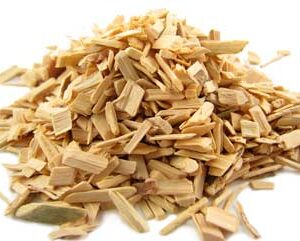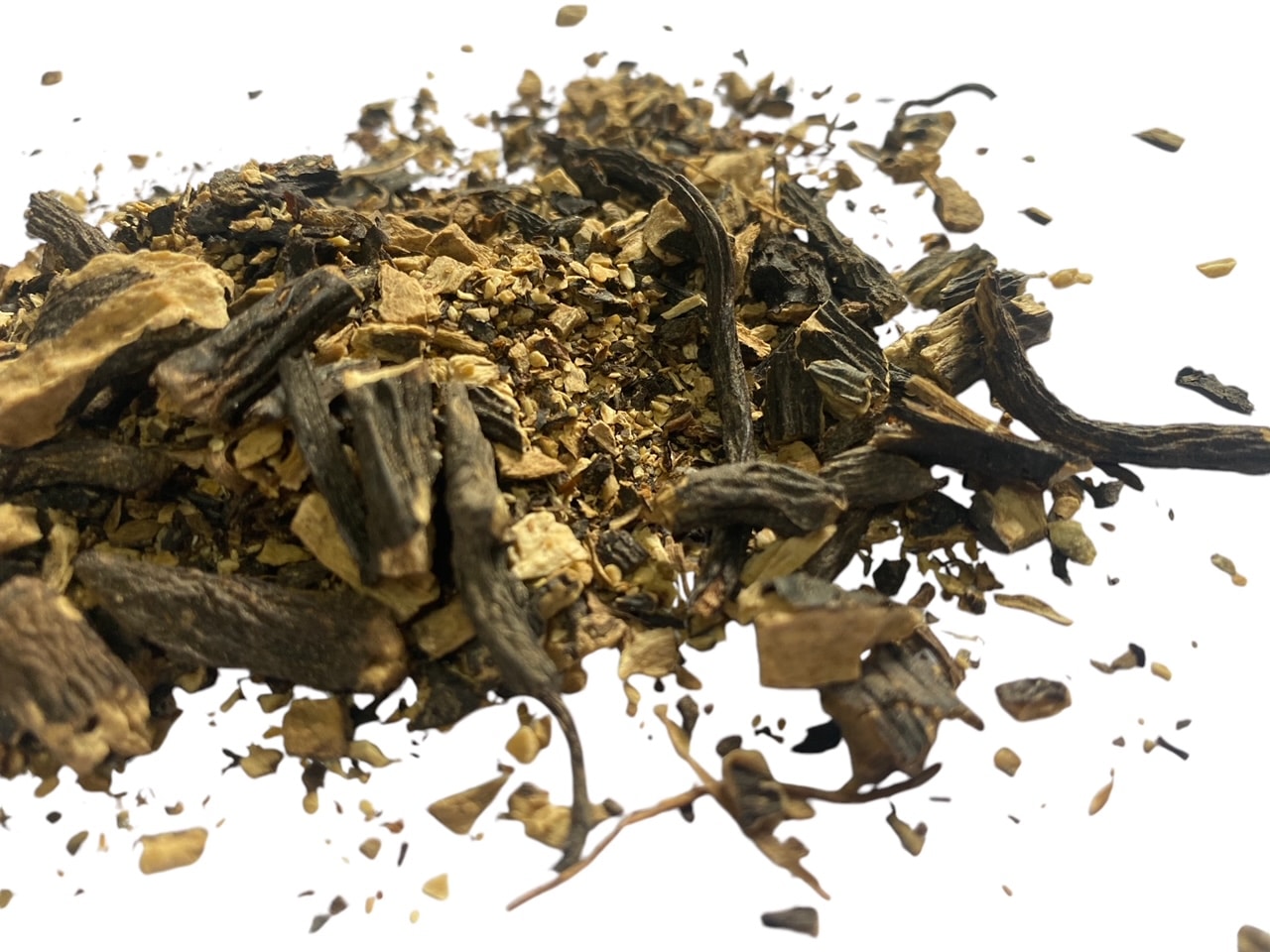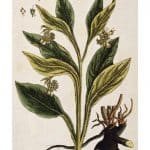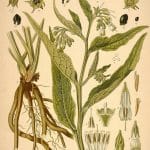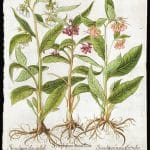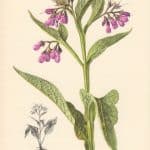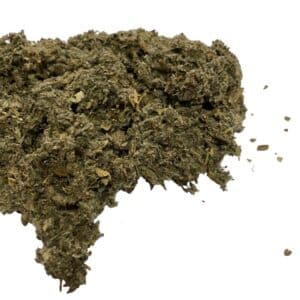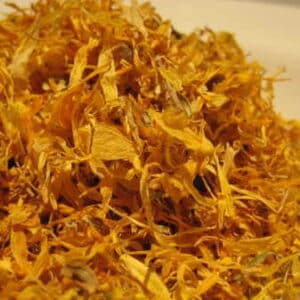Comfrey Root (Cut) – Symphytum officinale
£5.50
Comfrey Root Cut
Symphytum officinale
Also known as Knitbone or Boneset
100 grams
Cautions
There is some argument regarding the internal usage of Comfrey because it contains hepatotoxic pyrrolizidine alkaloids (PAs) ( there are also non-hepatotoxic pyrrolizidine alkaloids.). Use of Comfrey can, because of these PAs, lead to veno-occlusive disease (VOD). VOD can in turn lead to liver failure, and Comfrey, taken in extreme amounts, has been implicated in at least one death. In 2001, the United States Food and Drug Administration issued a warning against internal usage of herbal products containing Comfrey as a result.
Please be aware though that this reasoning is regarding the internal use of EXTREME amounts of the herb as opposed to the tiny amount used when drinking a herbal tea – as always the choice is yours.
Comfrey Root is a perennial with a black, turnip-like root and very large, hairy and broad leaves. It has small bell-shaped flowers of various colours, most often cream or purplish, which can sometimes be striped. It is native to Europe and likes to grow in damp, grassy places. It is common on river banks and ditches.
Traditional Uses and Constituents of Comfrey Root:-
Comfrey Root (Symphytum officinale) is often and most usually made into an infusion or tea used to treat inflamed, ulcerated digestive tracts and coughs.
One of Comfrey Root’s country names is ‘knitbone‘ or ‘boneset‘, and a reminder of its traditional use in healing. The herb contains allantoin, a cell proliferant that speeds up the natural replacement of body cells. This means that it will promote the swift healing of damaged or injured tissues, as well as maintaining cell growth and preventing diseases.
Comfrey Root has been used to treat a wide variety of ailments ranging from bronchial problems (taken internally) broken bones, sprains, arthritis, gastric and varicose ulcers, severe burns, acne and other skin conditions. It is also said to have bone and teeth building properties in children, and have value in treating ‘many female disorders’.
In folklore, Comfrey baths were popularly thougyt to repair the hymen and thus ‘restore virginity’!
Constituents of Comfrey also include mucilage, steroidal saponins, tannins, pyrrolizidine alkaloids, inulin, vitamin B12 and proteins.
Its traditional names of Knitbone, and Boneset and the derivation of its Latin name Symphytum (from the Greek symphis, meaning growing together of bones, and phyton, a plant) all give credence to its hitorical and current use.
Cautions with Comfrey Root:-
There is some argument regarding the internal usage of Comfrey because it contains hepatotoxic pyrrolizidine alkaloids (PAs) ( there are also non-hepatotoxic pyrrolizidine alkaloids.). Use of Comfrey can, because of these PAs, lead to veno-occlusive disease (VOD). VOD can in turn lead to liver failure, and Comfrey, taken in extreme amounts, has been implicated in at least one death. In 2001, the United States Food and Drug Administration issued a warning against internal usage of herbal products containing Comfrey as a result.
Please be aware though that this reasoning is regarding the internal use of EXTREME amounts of the herb as opposed to the tiny amount used when drinking a herbal tea – as always the choice is yours.
| Country of Origin | Germany |
|---|---|
| Batch Code | JF55879642 |
| Harvest | Aug 23 |
| Best Before | Oct 26 |
